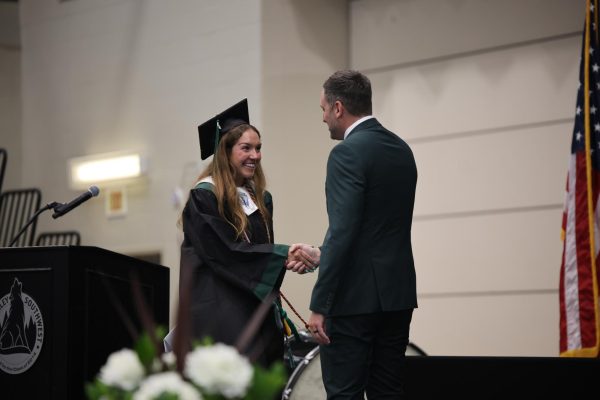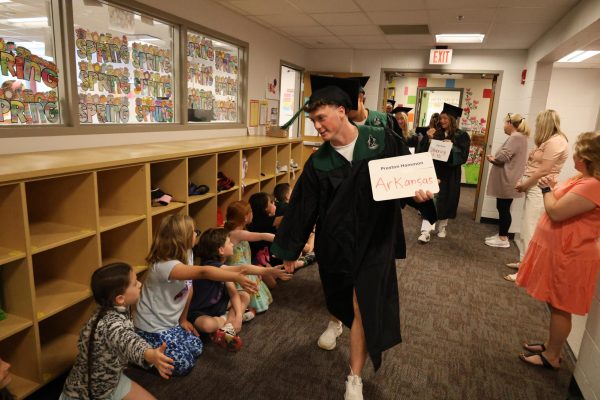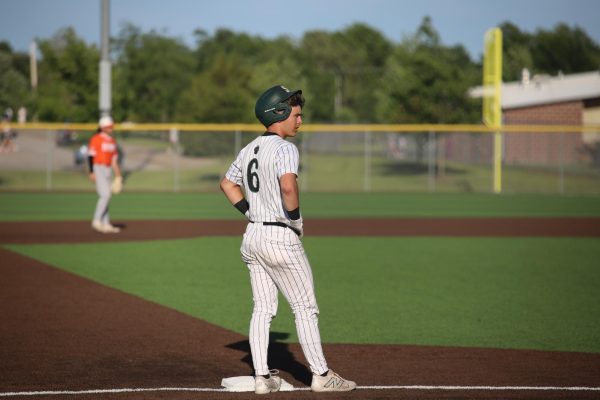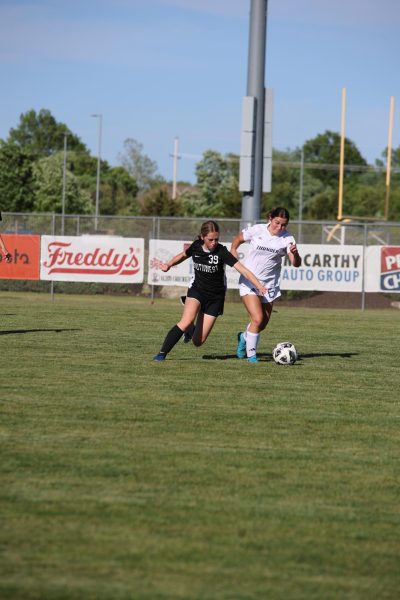Administrators explain how threats are dealt with
On Jan. 29, the school received a threat over social media. The administrators handled it discreetly, and many students only heard about it through an email sent out later in the day.
Threats are made against buildings and people at the school, and the district has procedures in place to handle these occurrences.
Social media has become one of the more common mediums to send threats. One out of three school threats are sent over social media, according to schoolsecurity.org. People do make jokes about threats on social media, but all of these can be taken as a real threat.
“Something one might think is a joke between friends can be seen by a third-party and think it is a threat to the school safety,” student resource officer (SRO) Matt Buelt said.
The nature of threats has also changed.
“It used to be that school districts had to deal with bomb threats,” Blue Valley director of safety and security Dan Carney said. “If you go back 20 years, that’s usually what people would think of. After Columbine, the school threats went to a to different meaning. Now when someone says a school threat, what [someone would think of] is someone shooting at the school.”
While concern over major events, such as school shootings is present, the situations which have arisen in the district have not been as severe. The majority of the threats the school handles are between two people; one student threatening another. It deals with school-wide threats less frequently.
In the past few years, the district has had to shut down buildings because of a threat. One of the more recent occurrences involved a man with a gun who was hiding out in a patch of woods. After being caught trespassing on a construction site and chased by the police, the man was tracked to an area within a half mile of two schools. The district decided to suspend all outside activities for a few hours until the suspect was detained.
The process the district utilizes for handling threats such as this is based upon a program from the Secret Service called Identify, Assess and Manage. However, instead of protecting dignitaries and elected officials, the district uses it to protect the staff and students. The district looks into every threat it receives.
“Even though in the back of my mind I may be thinking ‘this is probably not [a real threat],’ I can’t ever do that,” Principal Scott Roberts said. “I can’t ever say ‘oh that’s not serious.’ Because the one you don’t take seriously may be the one time when the threat is real.”
In the first step of the program, Identify, both the source of the threat and the threat’s validity must be determined. Investigating some threats can be trickier than others if much of the background is unknown.
“Anonymous threats are really hard because you don’t know where they are coming from or if they mean anything,” Roberts said. “Is there specific information about the school? Is there a time? Is there a method? Is there a place where the threat is going to occur? You have to start investigating that.”
The team (comprised of administrators, SROs and others) then uses the gathered information to determine where the process should go next.
“A lot of it comes down to the wording or the credibility, if that person has the ability to follow through with what they are saying,” Buelt said. “If somebody has the means and they’re saying it then we take that extremely seriously.”
In the second step, Assess, the group focuses on the perpetrator.
“You bring everybody into play who knows this person and may be able to help to determine where this person is,” Carney said. “Is this a kid who just jokes around all the time and doesn’t mean anything, or is this someone who we could be really concerned about? That assessment can involve mental health professionals, law-enforcement, administrators, teachers or friends, any number of people who sit down and try to assess whether this [person] is on a path to violence.”
If the offender is a student, he or she will be pulled from class and questioned. However, whatever he or she says must be taken with a grain of salt.
“If someone makes a threat and they get caught doing it, what’s the first thing that they’re going to do?” Carney said. “Probably to deny and try to minimize whatever it was they said.”
Once the threat has been investigated thoroughly, the team must then decide how to handle the consequences.
“The manage part of that equation is [next],” Carney said. “Is it a criminal threat and law-enforcement needs to step in? Do we need mental-health professionals? … This may not be a black-and-white proposition where one plus one is two; it may not be totally clear.”
Based upon the severity and validity of the threat, the person could receive consequences ranging from searches and check-ins to suspension to an arrest.
Although the district has this process in place, the most value is put on the prevention of threats.
“We would like to always be out in front of any kind of action,” Carney said. “We are prepared to respond to something like that and have mechanisms in place so that we can be prepared, but we put a lot of stock in trying to prevent that from ever occurring.”
One prevention method at the school is a camera system, which besides providing footage of any possible incident after the fact, can be used to monitor suspicious behavior.
According to Carney, if a passerby sees a person at the school acting suspiciously, like walking around the building alone or looking in windows, the footage can be used to identify the person and then alert the administration to keep an eye out for him or her to return.
“If someone is intending on doing something bad at your school like vandalizing or committing an act of violence, sometimes they will come to the school ahead of time and they do what is called ‘casing the joint,’” Carney said. “Bank robbers … are casing the bank when they come a week ahead of time and they scout out what’s going on and how everything works. But if you have cameras then you have got them on camera.”
Another method of prevention is that all exterior doors are locked from the outside. Although students are allowed to go to and from their cars, propping open doors to do this compromises the safety of the building.
“We know a lot of kids go in and out of the side doors below and sometimes by the band room but they don’t really realize we have those doors locked for a reason,” Buelt said. “We have a very large building with a lot of doors so if somebody were to sneak in with the intent to do harm and if kids were going out to their cars and propping doors open they could easily slip in behind them.”
Additionally, the pinch-point entry is designed to channel everyone through the front office. It ensures that all visitors to the building have checked in and approved by the receptionist, Meredith Stewart.
“We don’t want to create a bunch of inconveniences for students who have to come in late for one reason or another or parents who are bringing your book that you forgot but we do want to create inconvenience for someone who’s going to come in and do harm,” Carney said.
If Stewart sees someone approaching the building who could jeopardize the school safety, she has the power to press a button and lock the front door.
The SROs provide another level of security, but this can only be achieved with the aid of student vigilance.
“Those two people cannot be everywhere in that building at once …” Carney said. “Students will know of problems that are occurring in the building because there are so many of you. There is strength in numbers and more eyes watching the building, so if someone is going to pose a threat to your building the most likely scenario is that a student will hear about it first.”
Overall, Carney and Roberts agree that student involvement in schools is key. The atmosphere, according to Carney, should not be “students and staff, guards and prisoners.” They emphasize that the most important thing is for student to feel like they have a place and a trusted adult to talk to.
“You can buy all of the magnets and things, and I think all of the pinch-point entrances and locks in schools are important, but I don’t think it is as important as this: It’s hard to do harm to a school and to students and to adults who you have a relationship with,” Roberts said.

Lillie Hoffart is a senior and has been on staff since her freshman year. She enjoys writing and designing for the paper and is the managing editor....










